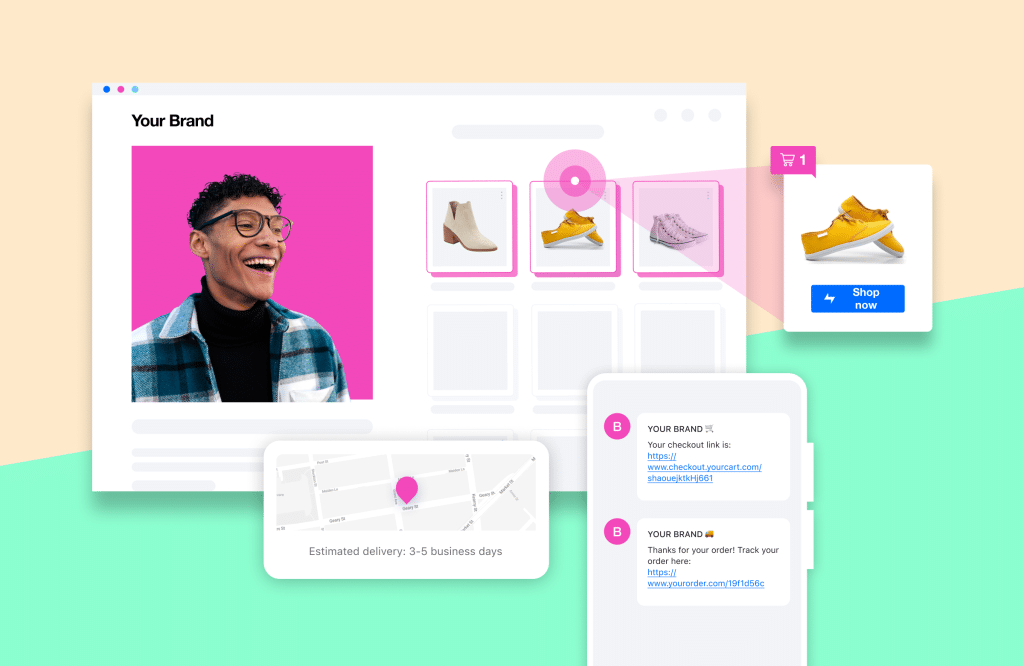Introduction
In the competitive world of eCommerce, the way products are displayed on your website can be a game-changer in attracting and retaining customers. Effective display of the product is not just about showcasing your products; it’s a strategic approach that involves a deep understanding of website merchandising and visual merchandising. This comprehensive guide will delve into the nuances of implementing effective product display strategies on your eCommerce website. From understanding the visual merchandising meaning to integrating sophisticated merchandising strategies, we’ll cover the essentials that can elevate your online store’s appeal and functionality.
The Importance of Product Display in eCommerce
The Role of Visual Appeal in Online Shopping
The first touchpoint of any online shopping experience is how a product is displayed. A well-thought-out display of the product can create an instant connection with potential customers. It’s not just about aesthetics; it’s about communicating the value and quality of your products effectively. In the realm of website merchandising, visual appeal plays a pivotal role in guiding customer decisions and enhancing user experience.
Leveraging Visual Merchandising Meaning in eCommerce
Visual merchandising in the digital landscape is about creating an environment that visually communicates your brand and product value. This means using high-quality images, engaging layouts, and interactive elements that make browsing your products an enjoyable experience. Understanding the visual merchandising meaning is key to creating displays that not only attract attention but also tell a compelling story about your products.
Strategies for Effective eCommerce Display of the Product
Utilizing High-Quality Images and Videos
One of the core elements of effective display strategy is the use of high-resolution images and videos. Customers can’t touch or feel products online, so it’s crucial to provide visual content that offers a detailed view. Incorporating multiple angles, zoom-in features, and even 360-degree views can significantly enhance the online shopping experience.

Implementing Responsive Design for All Devices
With the increasing use of mobile devices for online shopping, your eCommerce site must be responsive across all devices. This ensures that your it is optimized for various screen sizes, providing a seamless and consistent shopping experience for all customers.
Enhancing User Experience with Interactive Displays
Creating Interactive Product Views
Interactive displays, such as augmented reality (AR) views or virtual try-ons, can take your product display to the next level. These innovative features allow customers to visualize products in a more realistic and personal way, significantly enhancing the decision-making process.
The Power of Storytelling in Product Displays
Building a Narrative Around Your Products
Effective display of the product is not just about showing what you sell; it’s about telling a story. By creating thematic displays or curated collections, you can evoke emotions and connect with customers on a deeper level. This approach turns your products into experiences, making them more memorable and desirable.
Integrating Website Merchandising into Product Display
Understanding and Applying Website Merchandising
Website merchandising is the strategic placement and promotion of products on your website. It involves analyzing customer behavior, market trends, and sales data to optimize product placement. By integrating website merchandising into your product display strategy, you can increase visibility for key items and drive sales effectively.
Leveraging Data for Personalized Displays
Personalization is a powerful tool in website merchandising. By using customer data and analytics, you can create personalized displays that resonate with individual preferences and browsing history. This not only enhances the shopping experience but also increases the likelihood of conversion.
Embracing Modern Merchandising Strategies
Utilizing Cross-Selling and Up-Selling Techniques
Modern merchandising strategies such as cross-selling and up-selling are crucial for maximizing revenue. By displaying related products or higher-end alternatives, you can encourage customers to explore more options and increase their purchase value.
Experimenting with Different Layouts and Themes
Experimentation is key to finding what works best for your audience. Try different layouts, color schemes, and thematic displays to see what attracts and engages your customers the most. Regularly updating your retail product display keeps your site fresh and interesting.
The Role of SEO in Product Display
Optimizing Product Descriptions and Images for SEO
SEO is a critical aspect of product display. Optimizing product descriptions, titles, and images with relevant keywords ensures that your products are discoverable on search engines. This drives organic traffic to your site, increasing the chances of conversion.
Measuring the Success of Your Product Display Strategies
Analyzing Customer Feedback and Sales Data
Regular analysis of customer feedback and sales data is essential to measure the effectiveness of your strategies. This data provides insights into what works and what doesn’t, allowing you to make informed adjustments to your approach.

Conclusion
Implementing effective strategies on your eCommerce website is a dynamic and ongoing process. By understanding and applying concepts like visual merchandising meaning, website merchandising, and modern merchandising strategies, you can create displays that not only attract customers but also enhance their shopping experience. Remember, the key to successful product display page is a blend of visual appeal, user experience, and strategic marketing. Keep experimenting, analyzing, and evolving, and watch your eCommerce store thrive in the competitive digital marketplace.
What is a display product?
A display product refers to an item or merchandise that is intended to be visually showcased or exhibited to catch the attention of customers or prospects.
How do I set up a product display?
To set up a product display, follow these steps:
Choose a location for your display.
Determine the size and layout of your display area.
Gather all the products you want to include in the display.
Clean and organize the products to make them visually appealing.
Use props or signage to enhance the display.
Arrange the products in an eye-catching and logical way.
Consider using lighting to highlight certain products or areas.
Regularly restock and maintain the display to keep it looking fresh.
That’s it! Just follow these steps to set up an effective product display.


